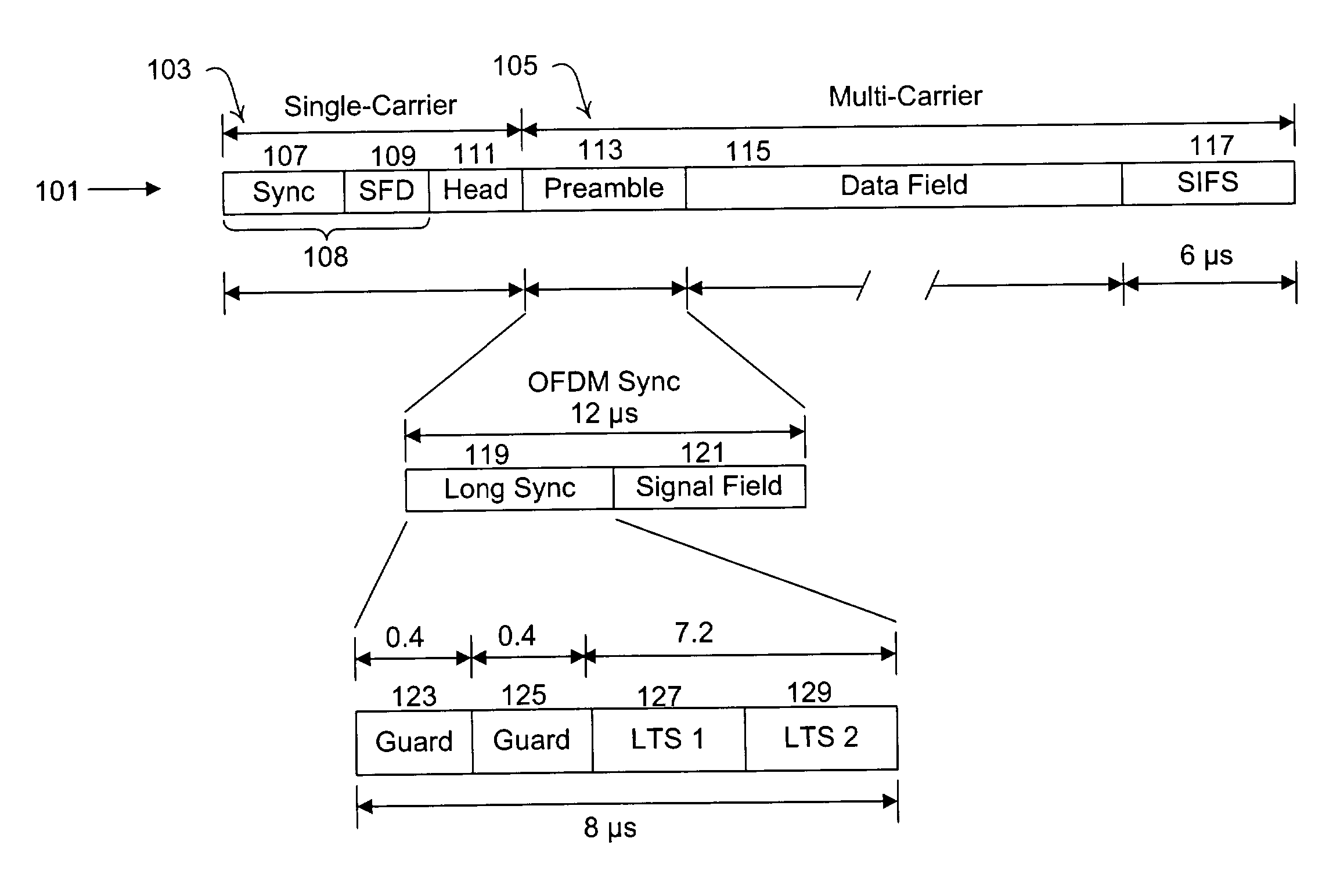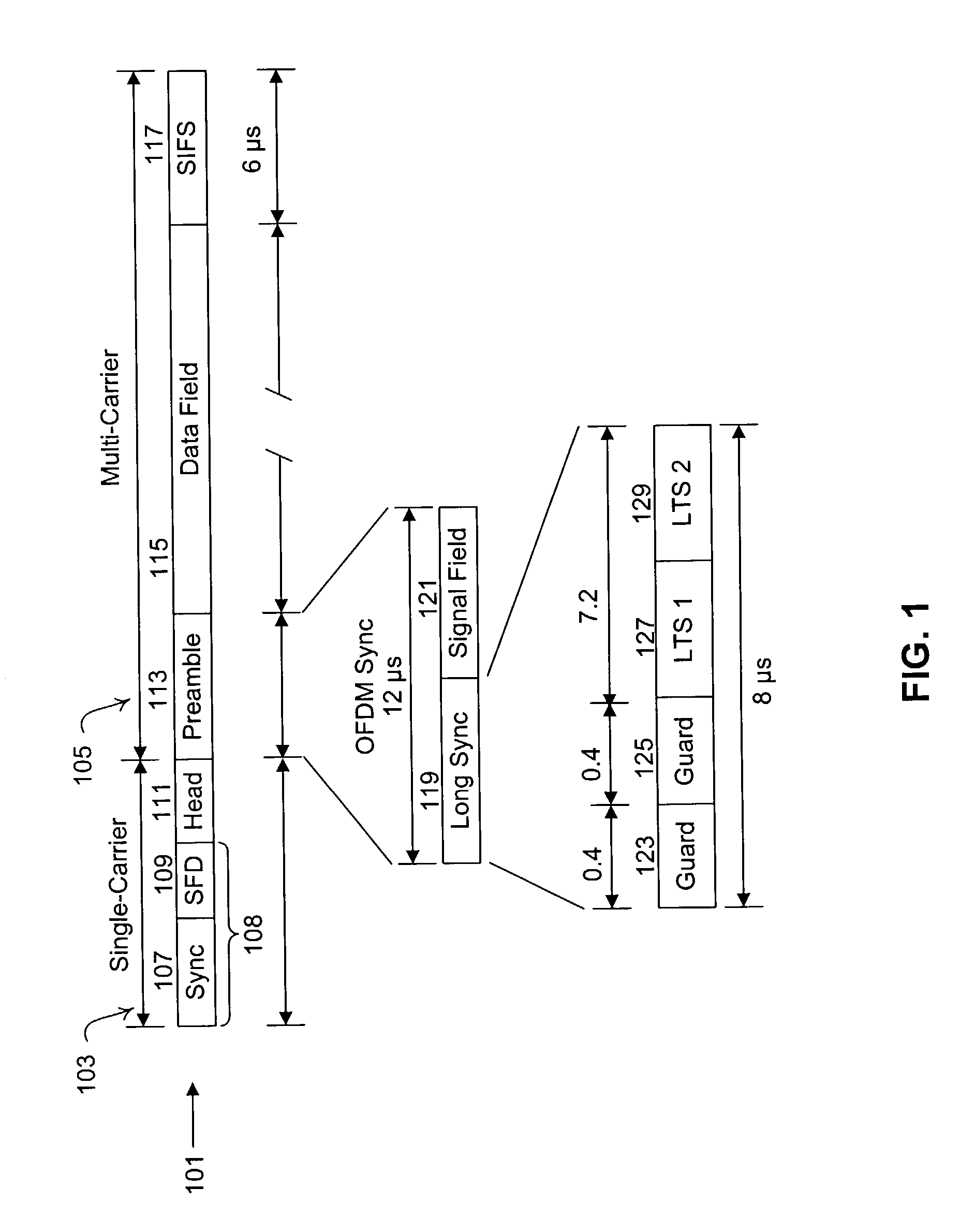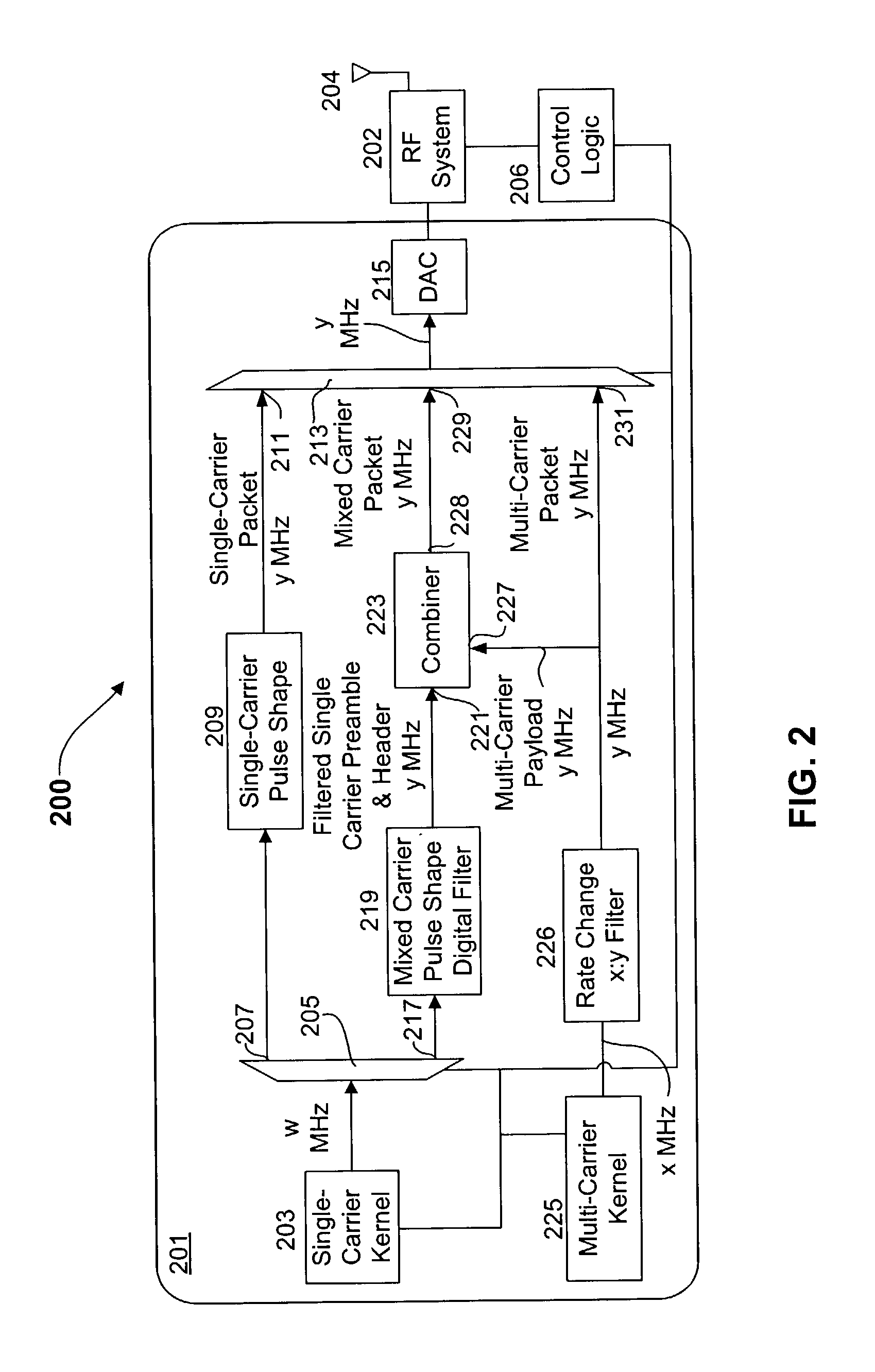Sample rate change between single-carrier and multi-carrier waveforms
a multi-carrier waveform and sample rate technology, applied in the field of baseband transmitters, can solve problems such as multi-path distortion, incompatibility of system implementation according to 802.11a and 802.11b standards, and inability to work together,
- Summary
- Abstract
- Description
- Claims
- Application Information
AI Technical Summary
Benefits of technology
Problems solved by technology
Method used
Image
Examples
Embodiment Construction
[0039] The wireless devices described herein operate in the 2.4 Gigahertz (GHz) band in 802.11b or 802.11g modes or in any of several bands (multi-band) in one or more 802.11a modes, such as 2.4 GHz, 5 GHz, 6 GHz or any other suitable band. The devices may be configured in any suitable format, such as any type of computer (desktop, portable, laptop, etc.), any type of compatible telecommunication device, any type of personal digital assistant (PDA), or any other type of network device, such as printers, fax machines, scanners, hubs, switches, routers, etc. It is noted that the present invention is not limited to the 802.11g proposal, the 802.11b standard, the 802.11a standard or the 2.4, 5 and 6 GHz frequency bands, although these standards and frequencies may be utilized in certain embodiments. The wireless devices may be configured to communicate with each other at any of the standard 802.11b rates, including 1, 2, 5.5 and 11 Mbps to maintain backwards compatibility with 802.11b d...
PUM
 Login to View More
Login to View More Abstract
Description
Claims
Application Information
 Login to View More
Login to View More - R&D
- Intellectual Property
- Life Sciences
- Materials
- Tech Scout
- Unparalleled Data Quality
- Higher Quality Content
- 60% Fewer Hallucinations
Browse by: Latest US Patents, China's latest patents, Technical Efficacy Thesaurus, Application Domain, Technology Topic, Popular Technical Reports.
© 2025 PatSnap. All rights reserved.Legal|Privacy policy|Modern Slavery Act Transparency Statement|Sitemap|About US| Contact US: help@patsnap.com



